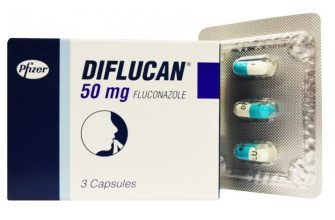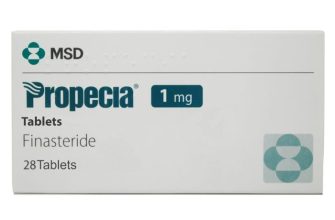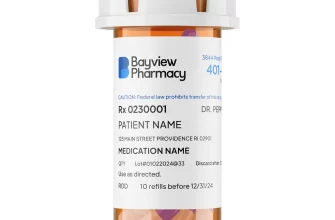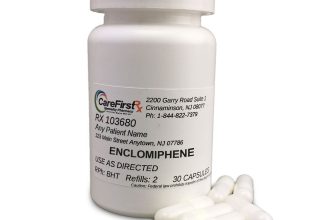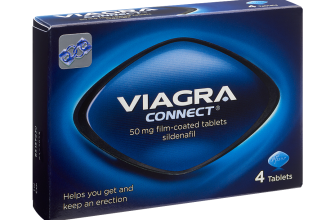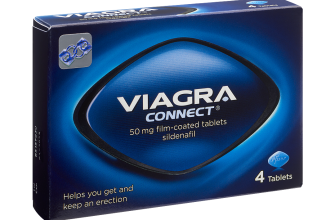Choosing to buy Viagra in Europe offers a streamlined process for those seeking solutions for erectile dysfunction. Many reputable online pharmacies provide easy access to this medication, making it convenient for consumers to maintain their privacy while also ensuring they receive proper medical guidance. Always opt for authorized providers to guarantee product quality and legality.
Current statistics reveal that the demand for Viagra continues to rise across European countries. Reports indicate a significant increase in sales, particularly in the United Kingdom and Germany, where awareness of ED treatments has surged. This growing interest reflects not only a change in attitudes towards sexual health but also a desire for effective solutions.
Consulting with a healthcare professional is advisable before purchasing Viagra. A thorough discussion can help determine the right dosage and identify any potential interactions with other medications. This proactive approach ensures safety and maximizes the benefits of treatment.
With various options available, consumers should take time to review the offers from multiple pharmacies. Comparing price points, delivery times, and customer reviews will aid in making an informed choice that aligns with personal preferences and needs. Staying informed empowers individuals to prioritize their health confidently.
- Viagra Sales in Europe: An In-Depth Analysis
- Regulatory Landscape for Viagra Sales in Europe
- Key Regulatory Authorities
- Approval Process
- Market Trends and Consumer Demand for Viagra
- Consumer Preferences and Purchasing Behavior
- Shifting Attitudes Towards Sexual Health
- Online vs. Traditional Pharmacies: Sales Channels for Viagra
- Impact of Pricing Strategies on Viagra Sales in Europe
- Competitive Pricing Analysis
- Market Segmentation and Targeting Strategies
- Evolving Perceptions of Erectile Dysfunction and Its Treatment
- Changing Attitudes Towards Erectile Dysfunction
- Popular Treatments and Accessibility
- Challenges and Barriers to Viagra Sales in Europe
- Market Competition and Pricing Issues
- Awareness and Stigma
- The Future of Viagra Sales in the European Market
- Regulatory Environment
- Market Diversification
Viagra Sales in Europe: An In-Depth Analysis
Sales of Viagra in Europe have shown steady growth over recent years. Market research indicates a significant increase in prescriptions, driven by rising awareness of erectile dysfunction (ED) and a changing perception of men’s health. Data from 2022 revealed that the sales volume reached approximately €300 million across the continent. This reflects a growing acceptance of ED treatments and a shift towards more open discussions about sexual health.
Prescription patterns vary across different countries. For instance, Germany leads with the highest sales figures, accounting for nearly 30% of the total market share. The UK follows closely, showcasing a strong demand for erectile dysfunction medications. Interestingly, Southern European nations like Italy and Spain are experiencing a notable increase in sales due to an aging population and greater awareness among younger men.
In terms of online sales, the rise of telemedicine platforms offers convenient access to Viagra. Patients appreciate the discretion and confidentiality that online pharmacies provide. A recent survey highlighted that over 40% of users opt for online purchases, reflecting a changing trend in how medications are obtained.
Strategies to enhance sales include targeted marketing campaigns aimed at younger demographics. Educating potential users about the importance of sexual health can help combat stigma and lead to increased prescriptions. Collaboration with healthcare providers to promote discussions around ED will also drive awareness and acceptance further.
Monitoring competitors is crucial as well. Generic versions of sildenafil have entered the market, making it important for original brands to differentiate themselves through quality and efficacy. Emphasizing the credibility and safety associated with Viagra can help maintain a strong market position.
In conclusion, Viagra sales in Europe reflect a growing openness towards addressing erectile dysfunction. A combination of effective marketing, leveraging online platforms, and fostering patient-provider conversations will support continued growth in this sector. Regular analysis of market trends and consumer preferences will ensure that stakeholders remain aligned with the evolving needs of the population.
Regulatory Landscape for Viagra Sales in Europe
Understanding the regulatory framework for Viagra sales in Europe is critical for pharmaceutical companies and consumers alike. Compliance with these regulations ensures safety and efficacy in the market.
Key Regulatory Authorities
The European Medicines Agency (EMA) plays a central role in the evaluation and approval of Viagra. National authorities, such as the Medicines and Healthcare products Regulatory Agency (MHRA) in the UK and the Bundesinstitut für Arzneimittel und Medizinprodukte (BfArM) in Germany, oversee local implementation.
- The EMA grants marketing authorization based on safety, efficacy, and quality data.
- Local authorities enforce guidelines and monitor post-market surveillance.
Approval Process
The approval process for Viagra involves several key steps:
- Conducting rigorous clinical trials to gather safety and efficacy data.
- Submission of a Marketing Authorization Application (MAA) to the EMA or local authorities.
- Review by regulatory experts and committees to assess the submitted data.
- Post-approval monitoring for adverse effects and compliance with approved use.
Additionally, the existence of generic versions of Viagra, such as Sildenafil, requires adherence to specific patent laws and guidelines, ensuring that they meet the same rigorous standards set for the branded product.
Ensuring compliance with these regulations not only safeguards public health but also enhances consumer confidence in Viagra’s availability across Europe.
Market Trends and Consumer Demand for Viagra
Current data indicates a steady increase in Viagra sales across Europe, with a growth rate of approximately 5% annually. This rise can be attributed to several factors, including a growing awareness of erectile dysfunction (ED) issues, the aging population, and evolving attitudes towards sexual health. Men are increasingly seeking solutions for ED, leading to a higher demand for Viagra as a reliable treatment option.
Consumer Preferences and Purchasing Behavior
Consumers prefer easy access to medications like Viagra. Online pharmacies are becoming a popular choice due to their convenience, confidentiality, and often lower prices. Research shows that nearly 40% of Viagra users in Europe purchase their medication online. Additionally, consumers favor generic versions, which offer a cost-effective alternative without compromising quality. This trend suggests that marketing strategies should focus on online platforms and the benefits of generic options to meet consumer needs effectively.
Shifting Attitudes Towards Sexual Health
There is an observable shift in societal attitudes toward discussing sexual health openly. This cultural change promotes greater acceptance of ED and encourages men to seek help. Consequently, the demand for Viagra is likely to increase further. Targeted advertising campaigns that educate and inform potential consumers can significantly impact sales. Engaging content that addresses common myths and provides reliable information about ED will resonate with consumers and drive interest in Viagra products.
Online vs. Traditional Pharmacies: Sales Channels for Viagra
Consider purchasing Viagra through online pharmacies for convenience and privacy. Online platforms often offer competitive prices and discreet packaging, making them appealing for many customers. Research reputable websites that require a prescription to ensure safety and authenticity of the product.
Traditional pharmacies provide immediate access to consultation with pharmacists. This face-to-face interaction can offer valuable insights about dosage, potential side effects, and drug interactions. It is also reassuring to verify the legitimacy of the medication directly. However, limited operating hours can be a drawback for some users.
Online pharmacies frequently feature user-friendly interfaces and provide the opportunity to compare prices across multiple sites. Check for customer reviews and third-party certifications to assess reliability. Some online services also offer subscriptions, ensuring a consistent supply without the need to reorder frequently.
Local pharmacies may carry a more extensive stock of related erectile dysfunction products. They can also accommodate insurance plans better, enabling customers to use their healthcare benefits for buying medication. However, availability can vary significantly by location.
In summary, online pharmacies offer convenience and privacy, while traditional pharmacies provide immediate support and verification. Users should assess their preferences for accessibility, advice, and cost-effectiveness when choosing their purchasing channel for Viagra.
Impact of Pricing Strategies on Viagra Sales in Europe
Adopting a value-based pricing strategy significantly boosts Viagra sales in Europe. Setting the price based on perceived value rather than manufacturing costs enhances consumer perception, making the product more appealing. Research shows that customers associate higher prices with better quality, which directly influences their purchasing decisions.
Competitive Pricing Analysis
Competitively pricing Viagra against alternative erectile dysfunction treatments encourages market penetration. Monitoring competitor prices allows companies to position their products strategically. When Viagra remains competitively priced, it maintains a strong market share. Additionally, promotional discounts and limited-time offers can stimulate demand, encouraging hesitant consumers to make a purchase.
Market Segmentation and Targeting Strategies
Segmenting the market based on demographics and income levels enables tailored pricing strategies. Offering tiered pricing can attract both affluent customers and those with lower disposable income. This approach maximizes reach while maintaining profitability. For instance, lower-priced generic variants can capture budget-conscious segments, while premium versions cater to higher-income consumers seeking brand recognition.
| Pricing Strategy | Effect on Sales |
|---|---|
| Value-Based Pricing | Increased perceived quality and sales volume |
| Competitive Pricing | Enhanced market share and consumer loyalty |
| Tiered Pricing | Broadened customer base and accessibility |
| Promotional Discounts | Immediate spike in sales and market interest |
Implementing these strategies allows for maximized revenue opportunities. By adapting pricing to reflect consumer expectations and market trends, Viagra can maintain a robust sales trajectory across Europe.
Evolving Perceptions of Erectile Dysfunction and Its Treatment
Addressing erectile dysfunction (ED) openly leads to better outcomes for men seeking treatment. Public awareness campaigns highlight the importance of discussing this condition, reducing stigma and promoting understanding.
Changing Attitudes Towards Erectile Dysfunction
- Increased Media Representation: Television and advertisements feature ED openly, providing a more relatable context for men to recognize and discuss their struggles.
- Healthcare Provider Engagement: Doctors increasingly encourage conversations around sexual health, allowing men to feel less isolated and promoting early intervention.
- Shift in Gender Perception: Acknowledgment that female partners may also experience emotional and psychological impacts, fostering joint discussions about intimacy and health.
Popular Treatments and Accessibility
- Prescription Medications: ED medications such as Viagra have become widely known and are more readily accessible through both traditional and online pharmacies.
- Counseling Options: Psychological support, therapy, and couple’s counseling gain traction as effective parts of a comprehensive approach to treating ED.
- Alternative Therapies: Interest in supplements, lifestyle changes, and exercises like pelvic floor strengthening is on the rise as men seek holistic solutions.
Understanding ED as a complex interplay of physical and psychological factors leads to a more comprehensive treatment approach. Encouraging open dialogue among men and their partners can significantly enhance satisfaction and quality of life.
Challenges and Barriers to Viagra Sales in Europe
To enhance Viagra sales in Europe, manufacturers must address strict regulatory frameworks. Each country requires compliance with various health and safety standards, which can delay product launches. Understanding these regulations is critical. Engaging with local legal experts can streamline the approval process and ensure all necessary certifications are met.
Market Competition and Pricing Issues
High competition from generic alternatives significantly impacts sales. Consumers often opt for cheaper options, making it essential for Viagra to convey its unique benefits. Implementing strategic marketing campaigns that highlight the advantages of brand-name products can attract patients willing to invest in quality. Additionally, pricing strategies must align with market expectations and consumer budgets to maintain competitiveness.
Awareness and Stigma
Raising awareness about erectile dysfunction and its treatments is vital. Many potential users remain hesitant due to stigma. To combat this, educational campaigns can promote open discussions about men’s health. Partnering with healthcare professionals to foster positive conversations can reduce misconceptions and increase prescription rates. Ensuring pharmacies carry adequate stock also aids accessibility and reinforces trust in the Viagra brand.
The Future of Viagra Sales in the European Market
Anticipate steady growth in Viagra sales across Europe, driven by an increasing awareness of sexual health issues. The ageing population significantly influences demand as more men seek solutions for erectile dysfunction. Marketing strategies should focus on educational campaigns that reduce stigma and encourage consultations with healthcare professionals.
Regulatory Environment
Keep an eye on the evolving regulatory landscape. As restrictions on advertising and prescription models adapt, companies might gain more flexibility in promoting their products. Collaborating with healthcare providers for seminars and workshops can foster direct engagement and build trust among potential users.
Market Diversification
Consider diversifying product offerings to meet varying consumer needs. Innovations such as generics and alternative delivery systems, like sublingual tablets, may attract a broader audience. Establish partnerships with online pharmacies to enhance accessibility and convenience for customers. Leverage social media to reach younger demographics, increasing brand visibility and consumer confidence.


